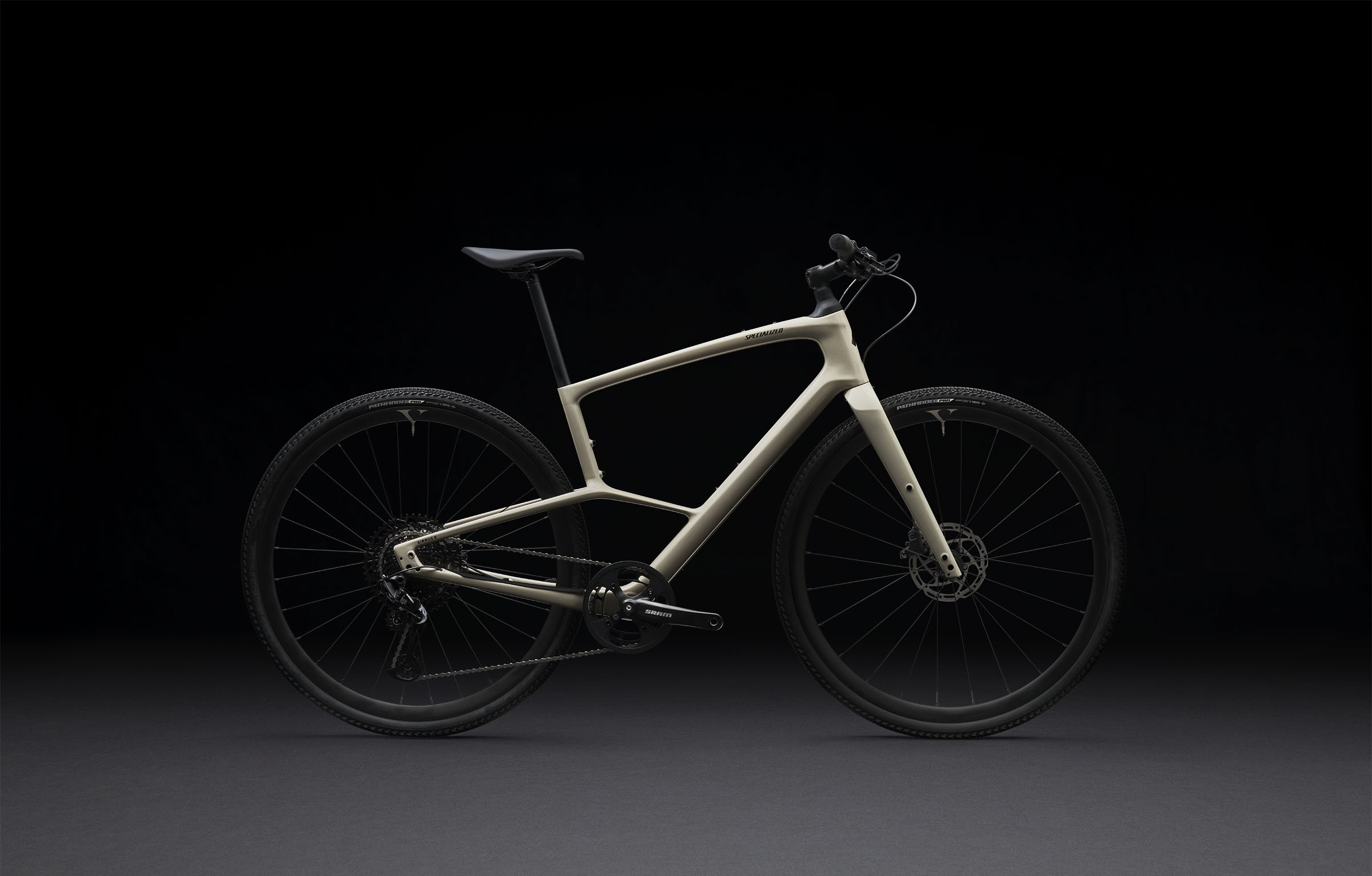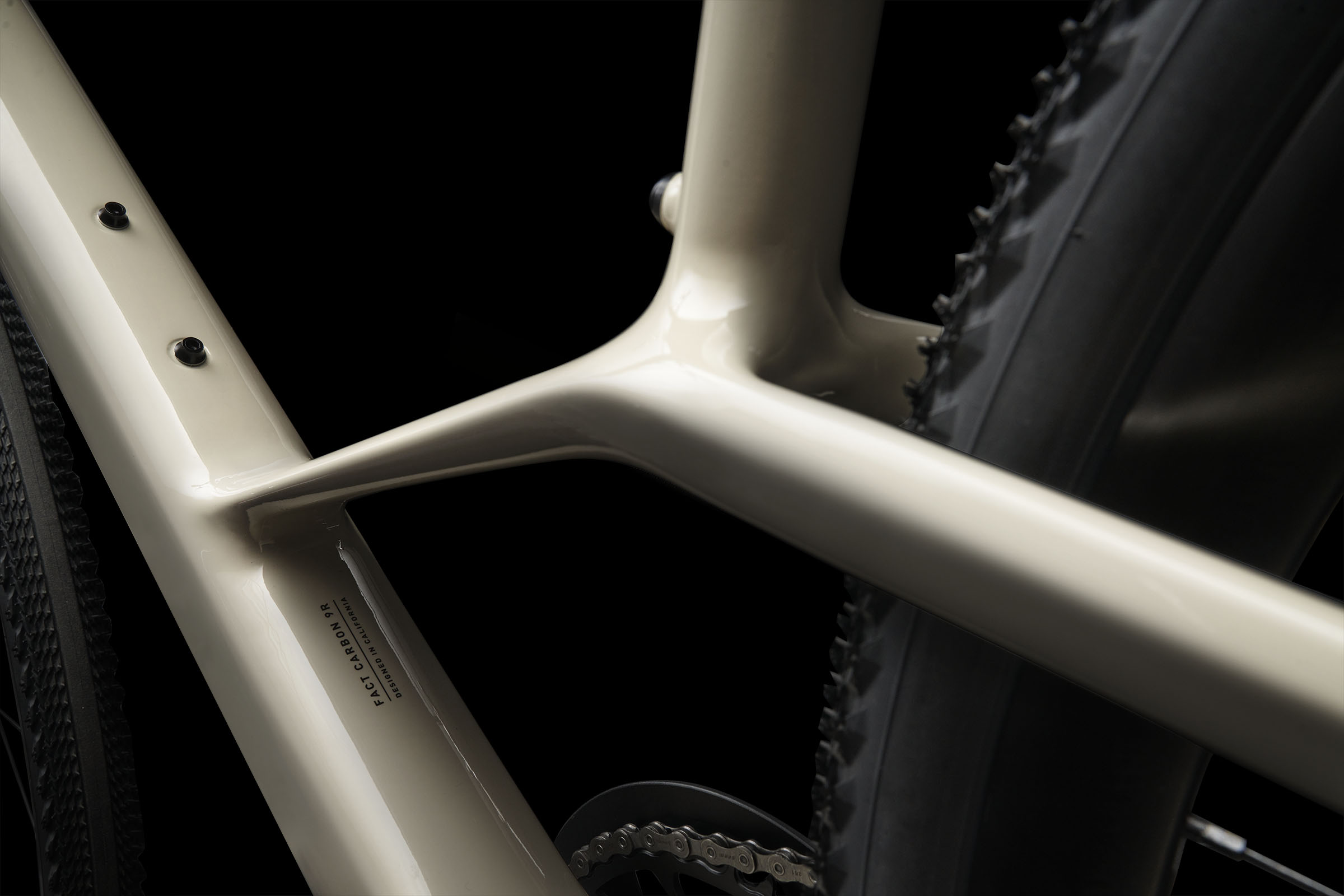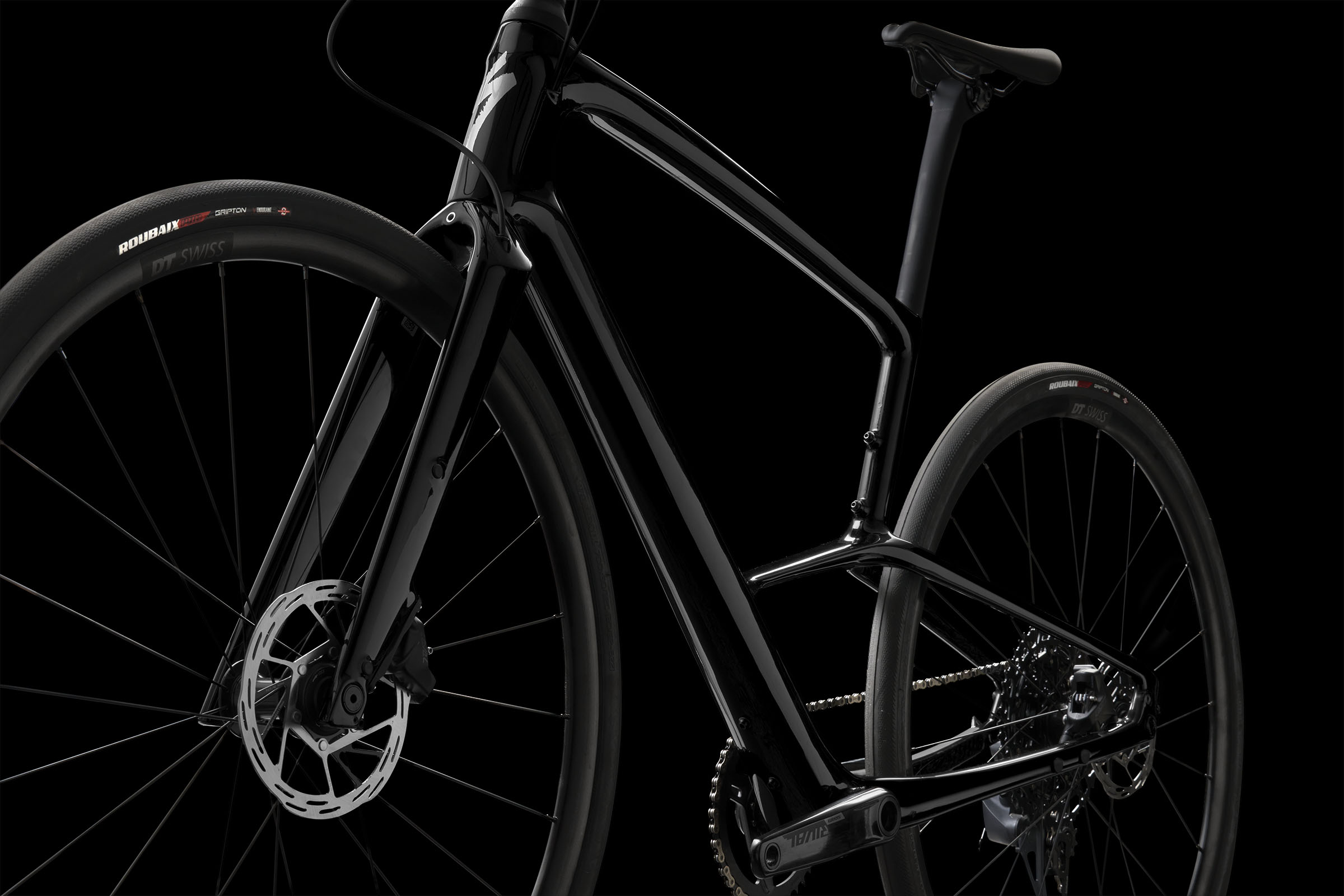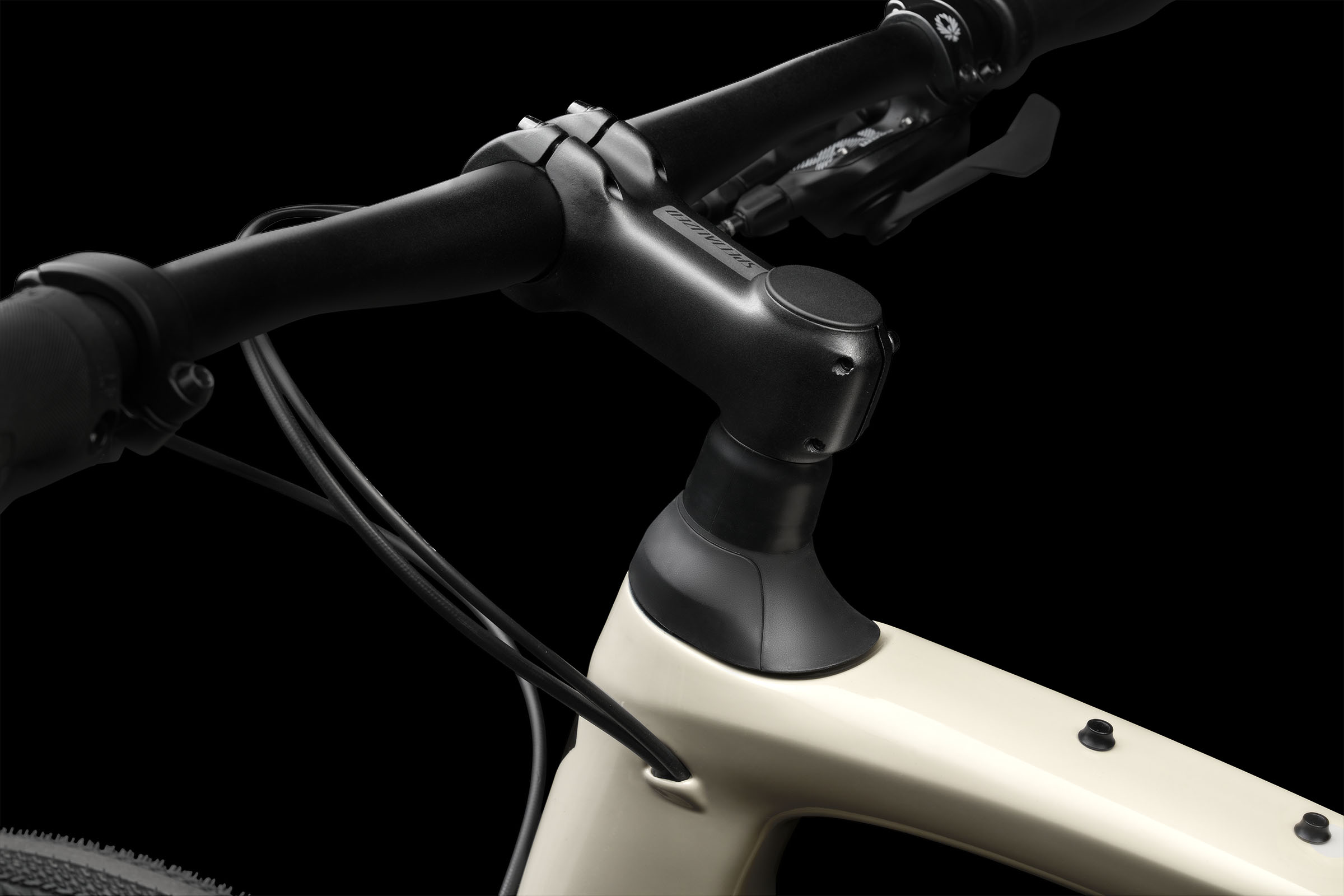Remember that mad frame patent from February? It’s a new Specialized Sirrus
Carbon frame, future shock, and of course a ‘Compliance Junction’

The Sirrus has been in Specialized’s lineup for a good long time now. For many years it sat below the Specialized Allez as a kind of halfway house for those customers that wanted one of the best road bikes but didn’t want to have drop bars. A high-performance hybrid, to use another phrase. Now, though, it seems like the new Sirrus Carbon is being launched as both a gateway to road bikes and a gateway to gravel bikes too.
Bigger tyres, a carbon frame, and future shock are all talking points, but the main one is going to be the frame shape itself, with what is dubbed the ‘Compliance Junction’. We got a sneak preview of it from a new patent spotted in February, but now we at least know what it was destined for.

The Compliance Junction
Barring semi-regular deviations off the beaten track the bicycle frame has remained the standard double diamond for the majority of its history. This is partially down to the heavy hand of the UCI, which mandates as such for races. Not all consumers are racers though; in fact, the majority don’t race at all, and so don’t need a bike frame that’s UCI-legal. For the new Sirrus models, Specialized has gone all carbon, with a bold new shape that sees the chainstays effectively form a bridge to the downtube in an arc, the apex of which connects to the truncated seat tube.
The aim of this new design is to provide added compliance at the rear of the bike, the arc effectively operating like a leaf spring. This is complemented by larger tyres, up to 42mm but coming as stock with 38s, and the same Future Shock up front as the Specialized Diverge and Specialized Roubaix.
Is the new Specialized Sirrus a gravel bike then? If it had drop bars we’d certainly be calling it one. It has all the hallmarks, and one version at least comes with Pathfinders, the Pro version of which sits within our list of the best gravel tyres, but it has the heritage of a hybrid, so who is it aimed at?

Sirrus Carbon, and Sirrus Carbon X
The new Sirrus Carbon has been another canvas upon which the paint of ‘make it gravel’ has been applied liberally, but if you’re after what we might all think of as a classic hybrid then worry not. In order to capture both markets, Specialized has bisected the Sirrus Carbon range into two streams: The Sirrus Carbon, focussed on about-town, tarmac-based activities, and the Sirrus Carbon X for those who want to take the dusty path home from work instead of playing with the traffic. The current Sirrus models, those with alloy frames, will remain as part of an expanded Sirrus offering alongside the Carbon options.
Both models feature the same carbon frame, a frame which features three pairs of bosses, and both feature the Future Shock. The Sirrus Carbon is built up with a 1x Sram GX Eagle Lunar drivetrain, and 32mm tubeless ready Roubaix Pro semi-slick tyres.
Get The Leadout Newsletter
The latest race content, interviews, features, reviews and expert buying guides, direct to your inbox!
The Sirrus Carbon X by comparison utilises Sram NX Eagle componentry, and 38mm Pathfinder Pro tyes. Both feature fender mounts and fender compatibility too. The rims used in the X model are a smidge larger at 21mm internal, rather than 20mm, but with the swap of a pair of tyres, the two options would be similarly capable.
The Sirrus Carbon 6.0 is a little more premium than the Sirrus Carbon X 5.0 however, as denoted by the numerals. The 6.0 gets a Roval seatpost and DT Swiss rims, and the groupset is more premium, but the real selling point seems to be the adaptability of the platform, regardless of which tier you come in at.
In terms of prices, the Carbon 6.0 will set you back £2400 / $3000, and the Carbon X 5.0 £1950 / $2250. Both models come in six sizes, from XS to XXL, and weigh 9.2kg and 10.9kg respectively.


Will joined the Cyclingnews team as a reviews writer in 2022, having previously written for Cyclist, BikeRadar and Advntr. He’s tried his hand at most cycling disciplines, from the standard mix of road, gravel, and mountain bike, to the more unusual like bike polo and tracklocross. He’s made his own bike frames, covered tech news from the biggest races on the planet, and published countless premium galleries thanks to his excellent photographic eye. Also, given he doesn’t ever ride indoors he’s become a real expert on foul-weather riding gear. His collection of bikes is a real smorgasbord, with everything from vintage-style steel tourers through to superlight flat bar hill climb machines.